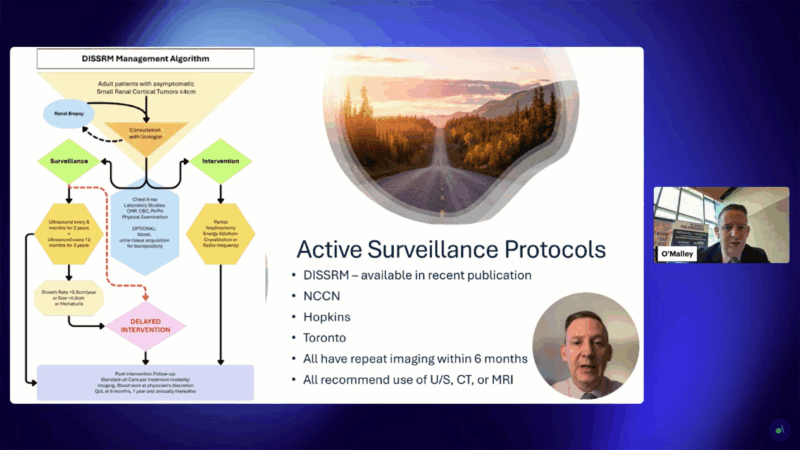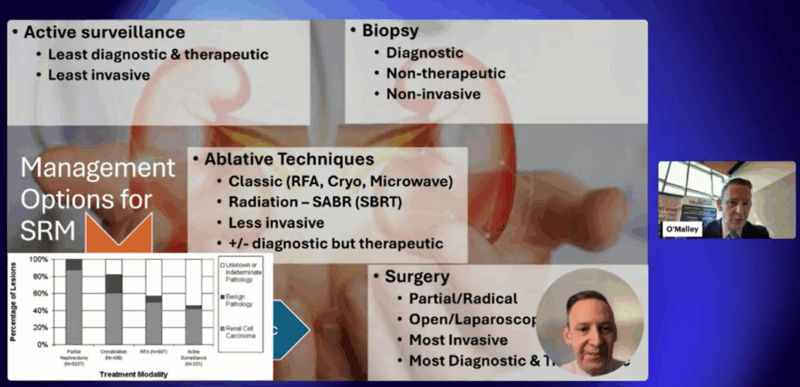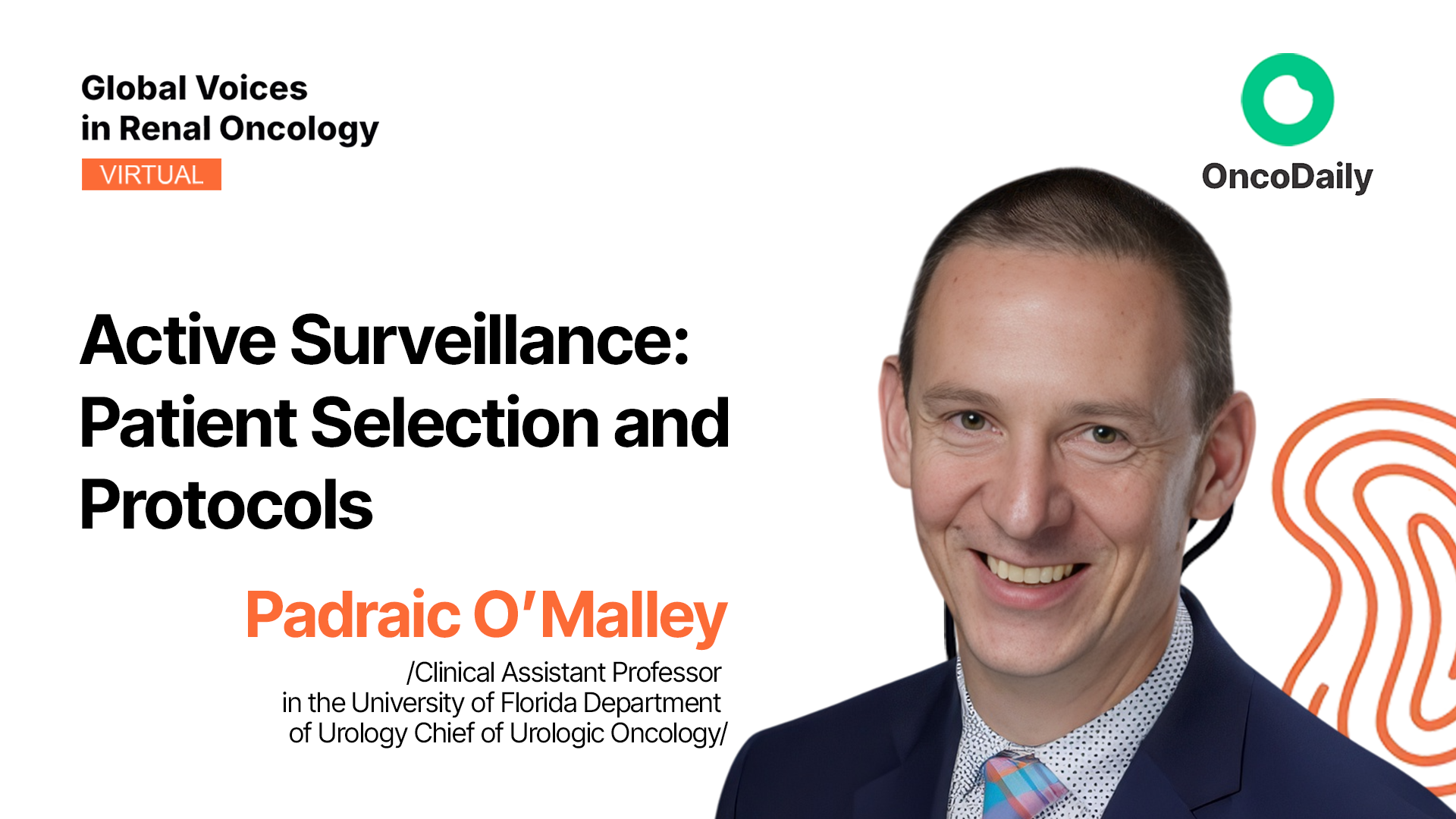At Global Voices in Renal Oncology (VIRO) 2025, organized by OncoDaily, Dr. Padraic O’Malley, Clinical Assistant Professor in the University of Florida Department of Urology and Chief of Urologic Oncology delivered a talk on “Active Surveillance: Patient Selection and Protocols”.
Key Takeaways from Dr. O’Malley’s Presentation:
Importance of Competing Risks:
- Dr. O’Malley highlighted that while monitoring the growth of tumors is crucial, it is equally important to consider other competing risks, such as death from causes unrelated to the cancer itself.
- Growth rate alone is not a reliable predictor of cancer progression or subtype.
- While larger masses tend to grow at a faster rate, this does not directly correlate with more aggressive biological behavior.
Patient Selection for Active Surveillance:
- Not all patients are suitable for active surveillance; selection depends on various factors, including tumor size and growth rate.
- Patients with tumors growing more than 3.5 cm per year were most likely to undergo delayed intervention, indicating the need for close monitoring.

Efficacy of Intervention:
- Dr. O’Malley pointed out that surgical interventions or ablation tend to reduce local tumor progression.
- However, studies suggest that these interventions do not significantly affect overall survival or metastatic progression compared to surveillance alone.
- The choice of intervention is more likely influenced by patient selection and other medical risks rather than by the tumor’s growth rate.

Read Other Highlights from VIRO 2025.
Join us in the conversation.
